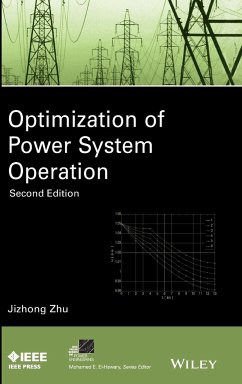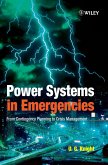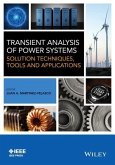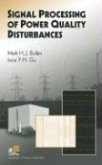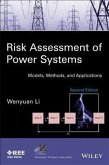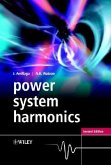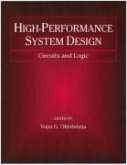Jizhong Zhu
Optimization of Power System Operation
Jizhong Zhu
Optimization of Power System Operation
- Gebundenes Buch
- Merkliste
- Auf die Merkliste
- Bewerten Bewerten
- Teilen
- Produkt teilen
- Produkterinnerung
- Produkterinnerung
This book applies the latest applications of new technologies to power system operation and analysis, including new and important areas that are not covered in the previous edition. Optimization of Power System Operation covers both traditional and modern technologies, including power flow analysis, steady-state security region analysis, security constrained economic dispatch, multi-area system economic dispatch, unit commitment, optimal power flow, smart grid operation, optimal load shed, optimal reconfiguration of distribution network, power system uncertainty analysis, power system…mehr
Andere Kunden interessierten sich auch für
![Power Systems in Emergencies Power Systems in Emergencies]() U G KnightPower Systems in Emergencies245,99 €
U G KnightPower Systems in Emergencies245,99 €![Transient Analysis of Power Systems Transient Analysis of Power Systems]() Transient Analysis of Power Systems159,99 €
Transient Analysis of Power Systems159,99 €![Signal Processing of Power Quality Disturbances Signal Processing of Power Quality Disturbances]() Math H J BollenSignal Processing of Power Quality Disturbances190,99 €
Math H J BollenSignal Processing of Power Quality Disturbances190,99 €![Risk Assessment of Power Systems Risk Assessment of Power Systems]() Wenyuan LiRisk Assessment of Power Systems143,99 €
Wenyuan LiRisk Assessment of Power Systems143,99 €![Power System Harmonics Power System Harmonics]() Jos ArrillagaPower System Harmonics202,99 €
Jos ArrillagaPower System Harmonics202,99 €![High-Performance System Design High-Performance System Design]() High-Performance System Design226,99 €
High-Performance System Design226,99 €![Understanding Power Quality Problems Understanding Power Quality Problems]() Math H J BollenUnderstanding Power Quality Problems196,99 €
Math H J BollenUnderstanding Power Quality Problems196,99 €-
-
-
This book applies the latest applications of new technologies to power system operation and analysis, including new and important areas that are not covered in the previous edition. Optimization of Power System Operation covers both traditional and modern technologies, including power flow analysis, steady-state security region analysis, security constrained economic dispatch, multi-area system economic dispatch, unit commitment, optimal power flow, smart grid operation, optimal load shed, optimal reconfiguration of distribution network, power system uncertainty analysis, power system sensitivity analysis, analytic hierarchical process, neural network, fuzzy theory, genetic algorithm, evolutionary programming, and particle swarm optimization, among others. New topics such as the wheeling model, multi-area wheeling, the total transfer capability computation in multiple areas, are also addressed. The new edition of this book continues to provide engineers and academics with a complete picture of the optimization of techniques used in power system operation, several important additions have been made. * Addresses advanced methods and optimization technologies and their applications in power systems * New chapters include: Steady State Security Regions, Optimal Load Shedding, Optimal Reconfiguration of Electric Distribution Network, and Uncertainty Analysis in Power Systems * New hot topics covered in detail include: Application of Renewable Energy and Operation of Smart Grid * End-of-chapter exercises added Some contents are analyzed and discussed for the first time in detail in this book. Power engineers, operators, and planners will be able to benefit from this insightful source, as well as advanced undergraduate and graduate students.
Produktdetails
- Produktdetails
- Verlag: Wiley
- 2nd Revised edition
- Seitenzahl: 664
- Erscheinungstermin: 27. Januar 2015
- Englisch
- Abmessung: 240mm x 161mm x 40mm
- Gewicht: 1153g
- ISBN-13: 9781118854150
- ISBN-10: 1118854152
- Artikelnr.: 41960929
- Herstellerkennzeichnung
- Libri GmbH
- Europaallee 1
- 36244 Bad Hersfeld
- gpsr@libri.de
- Verlag: Wiley
- 2nd Revised edition
- Seitenzahl: 664
- Erscheinungstermin: 27. Januar 2015
- Englisch
- Abmessung: 240mm x 161mm x 40mm
- Gewicht: 1153g
- ISBN-13: 9781118854150
- ISBN-10: 1118854152
- Artikelnr.: 41960929
- Herstellerkennzeichnung
- Libri GmbH
- Europaallee 1
- 36244 Bad Hersfeld
- gpsr@libri.de
Jizhong Zhu is a Senior Principal Power Systems Engineer as well as a Fellow with ALSTOM Grid Inc, USA. In addition to his industry experience, Dr. Zhu has worked at Howard University in Washington, D.C., the National University of Singapore, Brunel University in England, and Chongqing University in China. A Senior Member of the IEEE and an honorable advisory professor of Chongqing University, he has published six books as an author and co-author, as well as about two hundred papers in the international journals and conferences. His research interest is in the analysis, operation, planning and control of power systems as well as applications of renewable energy.
PREFACE xvii
PREFACE TO THE FIRST EDITION xix
ACKNOWLEDGMENTS xxi
AUTHOR BIOGRAPHY xxiii
CHAPTER 1 INTRODUCTION 1
1.1 Power System Basics 2
1.2 Conventional Methods 7
1.3 Intelligent Search Methods 9
1.4 Application of The Fuzzy Set Theory 10
References 10
CHAPTER 2 POWER FLOW ANALYSIS 13
2.1 Mathematical Model of Power Flow 13
2.2 Newton-Raphson Method 15
2.3 Gauss-Seidel Method 31
2.4 P-Q Decoupling Method 33
2.5 DC Power Flow 43
2.6 State Estimation 44
Problems and Exercises 48
References 49
CHAPTER 3 SENSITIVITY CALCULATION 51
3.1 Introduction 51
3.2 Loss Sensitivity Calculation 52
3.3 Calculation of Constrained Shift Sensitivity Factors 56
3.4 Perturbation Method for Sensitivity Analysis 68
3.5 Voltage Sensitivity Analysis 71
3.6 Real-Time Application of the Sensitivity Factors 73
3.7 Simulation Results 74
3.8 Conclusion 86
Problems and Exercises 88
References 88
CHAPTER 4 CLASSIC ECONOMIC DISPATCH 91
4.1 Introduction 91
4.2 Input-Output Characteristics of Generator Units 91
4.3 Thermal System Economic Dispatch Neglecting Network Losses 97
4.4 Calculation of Incremental Power Losses 105
4.5 Thermal System Economic Dispatch with Network Losses 107
4.6 Hydrothermal System Economic Dispatch 109
4.7 Economic Dispatch by Gradient Method 116
4.8 Classic Economic Dispatch by Genetic Algorithm 123
4.9 Classic Economic Dispatch by Hopfield Neural Network 128
Appendix A: Optimization Methods Used in Economic Operation 132
A.1 Gradient Method 132
A.2 Line Search 135
A.3 Newton-Raphson Optimization 135
A.4 Trust-Region Optimization 136
A.5 Newton-Raphson Optimization with Line Search 137
A.6 Quasi-Newton Optimization 137
A.7 Double Dogleg Optimization 139
A.8 Conjugate Gradient Optimization 139
A.9 Lagrange Multipliers Method 140
A.10 Kuhn-Tucker Conditions 141
Problems and Exercises 142
References 143
CHAPTER 5 SECURITY-CONSTRAINED ECONOMIC DISPATCH 145
5.1 Introduction 145
5.2 Linear Programming Method 145
5.3 Quadratic Programming Method 157
5.4 Network Flow Programming Method 162
5.5 Nonlinear Convex Network Flow Programming Method 183
5.6 Two-Stage Economic Dispatch Approach 197
5.7 Security Constrained Economic Dispatch by Genetic Algorithms 201
Appendix A: Network Flow Programming 202
A.1 The Transportation Problem 203
A.2 Dijkstra Label-Setting Algorithm 209
Problems and Exercises 210
References 212
CHAPTER 6 MULTIAREAS SYSTEM ECONOMIC DISPATCH 215
6.1 Introduction 215
6.2 Economy of Multiareas Interconnection 215
6.3 Wheeling 220
6.4 Multiarea Wheeling 225
6.5 Maed Solved by Nonlinear Convex Network Flow Programming 226
6.6 Nonlinear Optimization Neural Network Approach 235
6.7 Total Transfer Capability Computation in Multiareas 244
Appendix A: Comparison of Two Optimization Neural Network Models 248
A.1 For Proposed Neural Network M-9 248
A.2 For Neural Network M-10 in Reference [27] 249
Problems and Exercises 250
References 251
CHAPTER 7 UNIT COMMITMENT 253
7.1 Introduction 253
7.2 Priority Method 253
7.3 Dynamic Programming Method 256
7.4 Lagrange Relaxation Method 259
7.5 Evolutionary Programming-Based Tabu Search Method 263
7.6 Particle Swarm Optimization for Unit Commitment 269
7.7 Analytic Hierarchy Process 273
Problems and Exercises 293
References 295
CHAPTER 8 OPTIMAL POWER FLOW 297
8.1 Introduction 297
8.2 Newton Method 298
8.3 Gradient Method 307
8.4 Linear Programming OPF 312
8.5 Modified Interior Point OPF 314
8.6 OPF with Phase Shifter 328
8.7 Multiple Objectives OPF 337
8.8 Particle Swarm Optimization For OPF 346
Problems and Exercises 359
References 359
CHAPTER 9 STEADY-STATE SECURITY REGIONS 365
9.1 Introduction 365
9.2 Security Corridors 366
9.3 Traditional Expansion Method 371
9.4 Enhanced Expansion Method 374
9.5 Fuzzy Set and Linear Programming 385
Appendix A: Linear Programming 391
A.1 Standard Form of LP 391
A.2 Duality 394
A.3 The Simplex Method 397
Problems and Exercises 403
References 405
CHAPTER 10 APPLICATION OF RENEWABLE ENERGY 407
10.1 Introduction 407
10.2 Renewable Energy Resources 407
10.3 Operation of Grid-Connected PV System 409
10.4 Voltage Calculation of Distribution Network 414
10.5 Frequency Impact of PV Plant in Distribution Network 417
10.6 Operation of Wind Energy [1,10-16] 420
10.7 Voltage Analysis in Power System with Wind Energy 426
Problems and Exercises 432
References 434
CHAPTER 11 OPTIMAL LOAD SHEDDING 437
11.1 Introduction 437
11.2 Conventional Load Shedding 438
11.3 Intelligent Load Shedding 440
11.4 Formulation of Optimal Load Shedding 443
11.5 Optimal Load Shedding with Network Constraints 444
11.6 Optimal Load Shedding without Network Constraints 451
11.7 Distributed Interruptible Load Shedding (DILS) 460
11.8 Undervoltage Load Shedding 467
11.9 Congestion Management 473
Problems and Exercises 480
References 481
CHAPTER 12 OPTIMAL RECONFIGURATION OF ELECTRICAL DISTRIBUTION NETWORK 483
12.1 Introduction 483
12.2 Mathematical Model of DNRC 484
12.3 Heuristic Methods 486
12.4 Rule-Based Comprehensive Approach 488
12.5 Mixed-Integer Linear-Programming Approach 492
12.6 Application of GA to DNRC 504
12.7 Multiobjective Evolution Programming to DNRC 510
12.8 Genetic Algorithm Based on Matroid Theory 515
Appendix A: Evolutionary Algorithm of Multiobjective Optimization 521
Problems and Exercises 524
References 526
CHAPTER 13 UNCERTAINTY ANALYSIS IN POWER SYSTEMS 529
13.1 Introduction 529
13.2 Definition of Uncertainty 530
13.3 Uncertainty Load Analysis 530
13.4 Uncertainty Power Flow Analysis 542
13.5 Economic Dispatch with Uncertainties 545
13.6 Hydrothermal System Operation with Uncertainty 555
13.7 Unit Commitment with Uncertainties 555
13.8 VAR Optimization with Uncertain Reactive Load 561
13.9 Probabilistic Optimal Power Flow 563
13.10 Comparison of Deterministic and Probabilistic Methods 574
Problems and Exercises 575
References 576
CHAPTER 14 OPERATION OF SMART GRID 579
14.1 Introduction 579
14.2 Definition of Smart Grid 580
14.3 Smart Grid Technologies 580
14.4 Smart Grid Operation 581
14.5 Two-Stage Approach for Smart Grid Dispatch 597
14.6 Operation of Virtual Power Plants 603
14.7 Smart Distribution Grid 605
14.8 Microgrid Operation 608
14.9 A New Phase Angle Measurement Algorithm 616
Problems and Exercises 623
References 626
INDEX 629
PREFACE TO THE FIRST EDITION xix
ACKNOWLEDGMENTS xxi
AUTHOR BIOGRAPHY xxiii
CHAPTER 1 INTRODUCTION 1
1.1 Power System Basics 2
1.2 Conventional Methods 7
1.3 Intelligent Search Methods 9
1.4 Application of The Fuzzy Set Theory 10
References 10
CHAPTER 2 POWER FLOW ANALYSIS 13
2.1 Mathematical Model of Power Flow 13
2.2 Newton-Raphson Method 15
2.3 Gauss-Seidel Method 31
2.4 P-Q Decoupling Method 33
2.5 DC Power Flow 43
2.6 State Estimation 44
Problems and Exercises 48
References 49
CHAPTER 3 SENSITIVITY CALCULATION 51
3.1 Introduction 51
3.2 Loss Sensitivity Calculation 52
3.3 Calculation of Constrained Shift Sensitivity Factors 56
3.4 Perturbation Method for Sensitivity Analysis 68
3.5 Voltage Sensitivity Analysis 71
3.6 Real-Time Application of the Sensitivity Factors 73
3.7 Simulation Results 74
3.8 Conclusion 86
Problems and Exercises 88
References 88
CHAPTER 4 CLASSIC ECONOMIC DISPATCH 91
4.1 Introduction 91
4.2 Input-Output Characteristics of Generator Units 91
4.3 Thermal System Economic Dispatch Neglecting Network Losses 97
4.4 Calculation of Incremental Power Losses 105
4.5 Thermal System Economic Dispatch with Network Losses 107
4.6 Hydrothermal System Economic Dispatch 109
4.7 Economic Dispatch by Gradient Method 116
4.8 Classic Economic Dispatch by Genetic Algorithm 123
4.9 Classic Economic Dispatch by Hopfield Neural Network 128
Appendix A: Optimization Methods Used in Economic Operation 132
A.1 Gradient Method 132
A.2 Line Search 135
A.3 Newton-Raphson Optimization 135
A.4 Trust-Region Optimization 136
A.5 Newton-Raphson Optimization with Line Search 137
A.6 Quasi-Newton Optimization 137
A.7 Double Dogleg Optimization 139
A.8 Conjugate Gradient Optimization 139
A.9 Lagrange Multipliers Method 140
A.10 Kuhn-Tucker Conditions 141
Problems and Exercises 142
References 143
CHAPTER 5 SECURITY-CONSTRAINED ECONOMIC DISPATCH 145
5.1 Introduction 145
5.2 Linear Programming Method 145
5.3 Quadratic Programming Method 157
5.4 Network Flow Programming Method 162
5.5 Nonlinear Convex Network Flow Programming Method 183
5.6 Two-Stage Economic Dispatch Approach 197
5.7 Security Constrained Economic Dispatch by Genetic Algorithms 201
Appendix A: Network Flow Programming 202
A.1 The Transportation Problem 203
A.2 Dijkstra Label-Setting Algorithm 209
Problems and Exercises 210
References 212
CHAPTER 6 MULTIAREAS SYSTEM ECONOMIC DISPATCH 215
6.1 Introduction 215
6.2 Economy of Multiareas Interconnection 215
6.3 Wheeling 220
6.4 Multiarea Wheeling 225
6.5 Maed Solved by Nonlinear Convex Network Flow Programming 226
6.6 Nonlinear Optimization Neural Network Approach 235
6.7 Total Transfer Capability Computation in Multiareas 244
Appendix A: Comparison of Two Optimization Neural Network Models 248
A.1 For Proposed Neural Network M-9 248
A.2 For Neural Network M-10 in Reference [27] 249
Problems and Exercises 250
References 251
CHAPTER 7 UNIT COMMITMENT 253
7.1 Introduction 253
7.2 Priority Method 253
7.3 Dynamic Programming Method 256
7.4 Lagrange Relaxation Method 259
7.5 Evolutionary Programming-Based Tabu Search Method 263
7.6 Particle Swarm Optimization for Unit Commitment 269
7.7 Analytic Hierarchy Process 273
Problems and Exercises 293
References 295
CHAPTER 8 OPTIMAL POWER FLOW 297
8.1 Introduction 297
8.2 Newton Method 298
8.3 Gradient Method 307
8.4 Linear Programming OPF 312
8.5 Modified Interior Point OPF 314
8.6 OPF with Phase Shifter 328
8.7 Multiple Objectives OPF 337
8.8 Particle Swarm Optimization For OPF 346
Problems and Exercises 359
References 359
CHAPTER 9 STEADY-STATE SECURITY REGIONS 365
9.1 Introduction 365
9.2 Security Corridors 366
9.3 Traditional Expansion Method 371
9.4 Enhanced Expansion Method 374
9.5 Fuzzy Set and Linear Programming 385
Appendix A: Linear Programming 391
A.1 Standard Form of LP 391
A.2 Duality 394
A.3 The Simplex Method 397
Problems and Exercises 403
References 405
CHAPTER 10 APPLICATION OF RENEWABLE ENERGY 407
10.1 Introduction 407
10.2 Renewable Energy Resources 407
10.3 Operation of Grid-Connected PV System 409
10.4 Voltage Calculation of Distribution Network 414
10.5 Frequency Impact of PV Plant in Distribution Network 417
10.6 Operation of Wind Energy [1,10-16] 420
10.7 Voltage Analysis in Power System with Wind Energy 426
Problems and Exercises 432
References 434
CHAPTER 11 OPTIMAL LOAD SHEDDING 437
11.1 Introduction 437
11.2 Conventional Load Shedding 438
11.3 Intelligent Load Shedding 440
11.4 Formulation of Optimal Load Shedding 443
11.5 Optimal Load Shedding with Network Constraints 444
11.6 Optimal Load Shedding without Network Constraints 451
11.7 Distributed Interruptible Load Shedding (DILS) 460
11.8 Undervoltage Load Shedding 467
11.9 Congestion Management 473
Problems and Exercises 480
References 481
CHAPTER 12 OPTIMAL RECONFIGURATION OF ELECTRICAL DISTRIBUTION NETWORK 483
12.1 Introduction 483
12.2 Mathematical Model of DNRC 484
12.3 Heuristic Methods 486
12.4 Rule-Based Comprehensive Approach 488
12.5 Mixed-Integer Linear-Programming Approach 492
12.6 Application of GA to DNRC 504
12.7 Multiobjective Evolution Programming to DNRC 510
12.8 Genetic Algorithm Based on Matroid Theory 515
Appendix A: Evolutionary Algorithm of Multiobjective Optimization 521
Problems and Exercises 524
References 526
CHAPTER 13 UNCERTAINTY ANALYSIS IN POWER SYSTEMS 529
13.1 Introduction 529
13.2 Definition of Uncertainty 530
13.3 Uncertainty Load Analysis 530
13.4 Uncertainty Power Flow Analysis 542
13.5 Economic Dispatch with Uncertainties 545
13.6 Hydrothermal System Operation with Uncertainty 555
13.7 Unit Commitment with Uncertainties 555
13.8 VAR Optimization with Uncertain Reactive Load 561
13.9 Probabilistic Optimal Power Flow 563
13.10 Comparison of Deterministic and Probabilistic Methods 574
Problems and Exercises 575
References 576
CHAPTER 14 OPERATION OF SMART GRID 579
14.1 Introduction 579
14.2 Definition of Smart Grid 580
14.3 Smart Grid Technologies 580
14.4 Smart Grid Operation 581
14.5 Two-Stage Approach for Smart Grid Dispatch 597
14.6 Operation of Virtual Power Plants 603
14.7 Smart Distribution Grid 605
14.8 Microgrid Operation 608
14.9 A New Phase Angle Measurement Algorithm 616
Problems and Exercises 623
References 626
INDEX 629
PREFACE xvii
PREFACE TO THE FIRST EDITION xix
ACKNOWLEDGMENTS xxi
AUTHOR BIOGRAPHY xxiii
CHAPTER 1 INTRODUCTION 1
1.1 Power System Basics 2
1.2 Conventional Methods 7
1.3 Intelligent Search Methods 9
1.4 Application of The Fuzzy Set Theory 10
References 10
CHAPTER 2 POWER FLOW ANALYSIS 13
2.1 Mathematical Model of Power Flow 13
2.2 Newton-Raphson Method 15
2.3 Gauss-Seidel Method 31
2.4 P-Q Decoupling Method 33
2.5 DC Power Flow 43
2.6 State Estimation 44
Problems and Exercises 48
References 49
CHAPTER 3 SENSITIVITY CALCULATION 51
3.1 Introduction 51
3.2 Loss Sensitivity Calculation 52
3.3 Calculation of Constrained Shift Sensitivity Factors 56
3.4 Perturbation Method for Sensitivity Analysis 68
3.5 Voltage Sensitivity Analysis 71
3.6 Real-Time Application of the Sensitivity Factors 73
3.7 Simulation Results 74
3.8 Conclusion 86
Problems and Exercises 88
References 88
CHAPTER 4 CLASSIC ECONOMIC DISPATCH 91
4.1 Introduction 91
4.2 Input-Output Characteristics of Generator Units 91
4.3 Thermal System Economic Dispatch Neglecting Network Losses 97
4.4 Calculation of Incremental Power Losses 105
4.5 Thermal System Economic Dispatch with Network Losses 107
4.6 Hydrothermal System Economic Dispatch 109
4.7 Economic Dispatch by Gradient Method 116
4.8 Classic Economic Dispatch by Genetic Algorithm 123
4.9 Classic Economic Dispatch by Hopfield Neural Network 128
Appendix A: Optimization Methods Used in Economic Operation 132
A.1 Gradient Method 132
A.2 Line Search 135
A.3 Newton-Raphson Optimization 135
A.4 Trust-Region Optimization 136
A.5 Newton-Raphson Optimization with Line Search 137
A.6 Quasi-Newton Optimization 137
A.7 Double Dogleg Optimization 139
A.8 Conjugate Gradient Optimization 139
A.9 Lagrange Multipliers Method 140
A.10 Kuhn-Tucker Conditions 141
Problems and Exercises 142
References 143
CHAPTER 5 SECURITY-CONSTRAINED ECONOMIC DISPATCH 145
5.1 Introduction 145
5.2 Linear Programming Method 145
5.3 Quadratic Programming Method 157
5.4 Network Flow Programming Method 162
5.5 Nonlinear Convex Network Flow Programming Method 183
5.6 Two-Stage Economic Dispatch Approach 197
5.7 Security Constrained Economic Dispatch by Genetic Algorithms 201
Appendix A: Network Flow Programming 202
A.1 The Transportation Problem 203
A.2 Dijkstra Label-Setting Algorithm 209
Problems and Exercises 210
References 212
CHAPTER 6 MULTIAREAS SYSTEM ECONOMIC DISPATCH 215
6.1 Introduction 215
6.2 Economy of Multiareas Interconnection 215
6.3 Wheeling 220
6.4 Multiarea Wheeling 225
6.5 Maed Solved by Nonlinear Convex Network Flow Programming 226
6.6 Nonlinear Optimization Neural Network Approach 235
6.7 Total Transfer Capability Computation in Multiareas 244
Appendix A: Comparison of Two Optimization Neural Network Models 248
A.1 For Proposed Neural Network M-9 248
A.2 For Neural Network M-10 in Reference [27] 249
Problems and Exercises 250
References 251
CHAPTER 7 UNIT COMMITMENT 253
7.1 Introduction 253
7.2 Priority Method 253
7.3 Dynamic Programming Method 256
7.4 Lagrange Relaxation Method 259
7.5 Evolutionary Programming-Based Tabu Search Method 263
7.6 Particle Swarm Optimization for Unit Commitment 269
7.7 Analytic Hierarchy Process 273
Problems and Exercises 293
References 295
CHAPTER 8 OPTIMAL POWER FLOW 297
8.1 Introduction 297
8.2 Newton Method 298
8.3 Gradient Method 307
8.4 Linear Programming OPF 312
8.5 Modified Interior Point OPF 314
8.6 OPF with Phase Shifter 328
8.7 Multiple Objectives OPF 337
8.8 Particle Swarm Optimization For OPF 346
Problems and Exercises 359
References 359
CHAPTER 9 STEADY-STATE SECURITY REGIONS 365
9.1 Introduction 365
9.2 Security Corridors 366
9.3 Traditional Expansion Method 371
9.4 Enhanced Expansion Method 374
9.5 Fuzzy Set and Linear Programming 385
Appendix A: Linear Programming 391
A.1 Standard Form of LP 391
A.2 Duality 394
A.3 The Simplex Method 397
Problems and Exercises 403
References 405
CHAPTER 10 APPLICATION OF RENEWABLE ENERGY 407
10.1 Introduction 407
10.2 Renewable Energy Resources 407
10.3 Operation of Grid-Connected PV System 409
10.4 Voltage Calculation of Distribution Network 414
10.5 Frequency Impact of PV Plant in Distribution Network 417
10.6 Operation of Wind Energy [1,10-16] 420
10.7 Voltage Analysis in Power System with Wind Energy 426
Problems and Exercises 432
References 434
CHAPTER 11 OPTIMAL LOAD SHEDDING 437
11.1 Introduction 437
11.2 Conventional Load Shedding 438
11.3 Intelligent Load Shedding 440
11.4 Formulation of Optimal Load Shedding 443
11.5 Optimal Load Shedding with Network Constraints 444
11.6 Optimal Load Shedding without Network Constraints 451
11.7 Distributed Interruptible Load Shedding (DILS) 460
11.8 Undervoltage Load Shedding 467
11.9 Congestion Management 473
Problems and Exercises 480
References 481
CHAPTER 12 OPTIMAL RECONFIGURATION OF ELECTRICAL DISTRIBUTION NETWORK 483
12.1 Introduction 483
12.2 Mathematical Model of DNRC 484
12.3 Heuristic Methods 486
12.4 Rule-Based Comprehensive Approach 488
12.5 Mixed-Integer Linear-Programming Approach 492
12.6 Application of GA to DNRC 504
12.7 Multiobjective Evolution Programming to DNRC 510
12.8 Genetic Algorithm Based on Matroid Theory 515
Appendix A: Evolutionary Algorithm of Multiobjective Optimization 521
Problems and Exercises 524
References 526
CHAPTER 13 UNCERTAINTY ANALYSIS IN POWER SYSTEMS 529
13.1 Introduction 529
13.2 Definition of Uncertainty 530
13.3 Uncertainty Load Analysis 530
13.4 Uncertainty Power Flow Analysis 542
13.5 Economic Dispatch with Uncertainties 545
13.6 Hydrothermal System Operation with Uncertainty 555
13.7 Unit Commitment with Uncertainties 555
13.8 VAR Optimization with Uncertain Reactive Load 561
13.9 Probabilistic Optimal Power Flow 563
13.10 Comparison of Deterministic and Probabilistic Methods 574
Problems and Exercises 575
References 576
CHAPTER 14 OPERATION OF SMART GRID 579
14.1 Introduction 579
14.2 Definition of Smart Grid 580
14.3 Smart Grid Technologies 580
14.4 Smart Grid Operation 581
14.5 Two-Stage Approach for Smart Grid Dispatch 597
14.6 Operation of Virtual Power Plants 603
14.7 Smart Distribution Grid 605
14.8 Microgrid Operation 608
14.9 A New Phase Angle Measurement Algorithm 616
Problems and Exercises 623
References 626
INDEX 629
PREFACE TO THE FIRST EDITION xix
ACKNOWLEDGMENTS xxi
AUTHOR BIOGRAPHY xxiii
CHAPTER 1 INTRODUCTION 1
1.1 Power System Basics 2
1.2 Conventional Methods 7
1.3 Intelligent Search Methods 9
1.4 Application of The Fuzzy Set Theory 10
References 10
CHAPTER 2 POWER FLOW ANALYSIS 13
2.1 Mathematical Model of Power Flow 13
2.2 Newton-Raphson Method 15
2.3 Gauss-Seidel Method 31
2.4 P-Q Decoupling Method 33
2.5 DC Power Flow 43
2.6 State Estimation 44
Problems and Exercises 48
References 49
CHAPTER 3 SENSITIVITY CALCULATION 51
3.1 Introduction 51
3.2 Loss Sensitivity Calculation 52
3.3 Calculation of Constrained Shift Sensitivity Factors 56
3.4 Perturbation Method for Sensitivity Analysis 68
3.5 Voltage Sensitivity Analysis 71
3.6 Real-Time Application of the Sensitivity Factors 73
3.7 Simulation Results 74
3.8 Conclusion 86
Problems and Exercises 88
References 88
CHAPTER 4 CLASSIC ECONOMIC DISPATCH 91
4.1 Introduction 91
4.2 Input-Output Characteristics of Generator Units 91
4.3 Thermal System Economic Dispatch Neglecting Network Losses 97
4.4 Calculation of Incremental Power Losses 105
4.5 Thermal System Economic Dispatch with Network Losses 107
4.6 Hydrothermal System Economic Dispatch 109
4.7 Economic Dispatch by Gradient Method 116
4.8 Classic Economic Dispatch by Genetic Algorithm 123
4.9 Classic Economic Dispatch by Hopfield Neural Network 128
Appendix A: Optimization Methods Used in Economic Operation 132
A.1 Gradient Method 132
A.2 Line Search 135
A.3 Newton-Raphson Optimization 135
A.4 Trust-Region Optimization 136
A.5 Newton-Raphson Optimization with Line Search 137
A.6 Quasi-Newton Optimization 137
A.7 Double Dogleg Optimization 139
A.8 Conjugate Gradient Optimization 139
A.9 Lagrange Multipliers Method 140
A.10 Kuhn-Tucker Conditions 141
Problems and Exercises 142
References 143
CHAPTER 5 SECURITY-CONSTRAINED ECONOMIC DISPATCH 145
5.1 Introduction 145
5.2 Linear Programming Method 145
5.3 Quadratic Programming Method 157
5.4 Network Flow Programming Method 162
5.5 Nonlinear Convex Network Flow Programming Method 183
5.6 Two-Stage Economic Dispatch Approach 197
5.7 Security Constrained Economic Dispatch by Genetic Algorithms 201
Appendix A: Network Flow Programming 202
A.1 The Transportation Problem 203
A.2 Dijkstra Label-Setting Algorithm 209
Problems and Exercises 210
References 212
CHAPTER 6 MULTIAREAS SYSTEM ECONOMIC DISPATCH 215
6.1 Introduction 215
6.2 Economy of Multiareas Interconnection 215
6.3 Wheeling 220
6.4 Multiarea Wheeling 225
6.5 Maed Solved by Nonlinear Convex Network Flow Programming 226
6.6 Nonlinear Optimization Neural Network Approach 235
6.7 Total Transfer Capability Computation in Multiareas 244
Appendix A: Comparison of Two Optimization Neural Network Models 248
A.1 For Proposed Neural Network M-9 248
A.2 For Neural Network M-10 in Reference [27] 249
Problems and Exercises 250
References 251
CHAPTER 7 UNIT COMMITMENT 253
7.1 Introduction 253
7.2 Priority Method 253
7.3 Dynamic Programming Method 256
7.4 Lagrange Relaxation Method 259
7.5 Evolutionary Programming-Based Tabu Search Method 263
7.6 Particle Swarm Optimization for Unit Commitment 269
7.7 Analytic Hierarchy Process 273
Problems and Exercises 293
References 295
CHAPTER 8 OPTIMAL POWER FLOW 297
8.1 Introduction 297
8.2 Newton Method 298
8.3 Gradient Method 307
8.4 Linear Programming OPF 312
8.5 Modified Interior Point OPF 314
8.6 OPF with Phase Shifter 328
8.7 Multiple Objectives OPF 337
8.8 Particle Swarm Optimization For OPF 346
Problems and Exercises 359
References 359
CHAPTER 9 STEADY-STATE SECURITY REGIONS 365
9.1 Introduction 365
9.2 Security Corridors 366
9.3 Traditional Expansion Method 371
9.4 Enhanced Expansion Method 374
9.5 Fuzzy Set and Linear Programming 385
Appendix A: Linear Programming 391
A.1 Standard Form of LP 391
A.2 Duality 394
A.3 The Simplex Method 397
Problems and Exercises 403
References 405
CHAPTER 10 APPLICATION OF RENEWABLE ENERGY 407
10.1 Introduction 407
10.2 Renewable Energy Resources 407
10.3 Operation of Grid-Connected PV System 409
10.4 Voltage Calculation of Distribution Network 414
10.5 Frequency Impact of PV Plant in Distribution Network 417
10.6 Operation of Wind Energy [1,10-16] 420
10.7 Voltage Analysis in Power System with Wind Energy 426
Problems and Exercises 432
References 434
CHAPTER 11 OPTIMAL LOAD SHEDDING 437
11.1 Introduction 437
11.2 Conventional Load Shedding 438
11.3 Intelligent Load Shedding 440
11.4 Formulation of Optimal Load Shedding 443
11.5 Optimal Load Shedding with Network Constraints 444
11.6 Optimal Load Shedding without Network Constraints 451
11.7 Distributed Interruptible Load Shedding (DILS) 460
11.8 Undervoltage Load Shedding 467
11.9 Congestion Management 473
Problems and Exercises 480
References 481
CHAPTER 12 OPTIMAL RECONFIGURATION OF ELECTRICAL DISTRIBUTION NETWORK 483
12.1 Introduction 483
12.2 Mathematical Model of DNRC 484
12.3 Heuristic Methods 486
12.4 Rule-Based Comprehensive Approach 488
12.5 Mixed-Integer Linear-Programming Approach 492
12.6 Application of GA to DNRC 504
12.7 Multiobjective Evolution Programming to DNRC 510
12.8 Genetic Algorithm Based on Matroid Theory 515
Appendix A: Evolutionary Algorithm of Multiobjective Optimization 521
Problems and Exercises 524
References 526
CHAPTER 13 UNCERTAINTY ANALYSIS IN POWER SYSTEMS 529
13.1 Introduction 529
13.2 Definition of Uncertainty 530
13.3 Uncertainty Load Analysis 530
13.4 Uncertainty Power Flow Analysis 542
13.5 Economic Dispatch with Uncertainties 545
13.6 Hydrothermal System Operation with Uncertainty 555
13.7 Unit Commitment with Uncertainties 555
13.8 VAR Optimization with Uncertain Reactive Load 561
13.9 Probabilistic Optimal Power Flow 563
13.10 Comparison of Deterministic and Probabilistic Methods 574
Problems and Exercises 575
References 576
CHAPTER 14 OPERATION OF SMART GRID 579
14.1 Introduction 579
14.2 Definition of Smart Grid 580
14.3 Smart Grid Technologies 580
14.4 Smart Grid Operation 581
14.5 Two-Stage Approach for Smart Grid Dispatch 597
14.6 Operation of Virtual Power Plants 603
14.7 Smart Distribution Grid 605
14.8 Microgrid Operation 608
14.9 A New Phase Angle Measurement Algorithm 616
Problems and Exercises 623
References 626
INDEX 629

